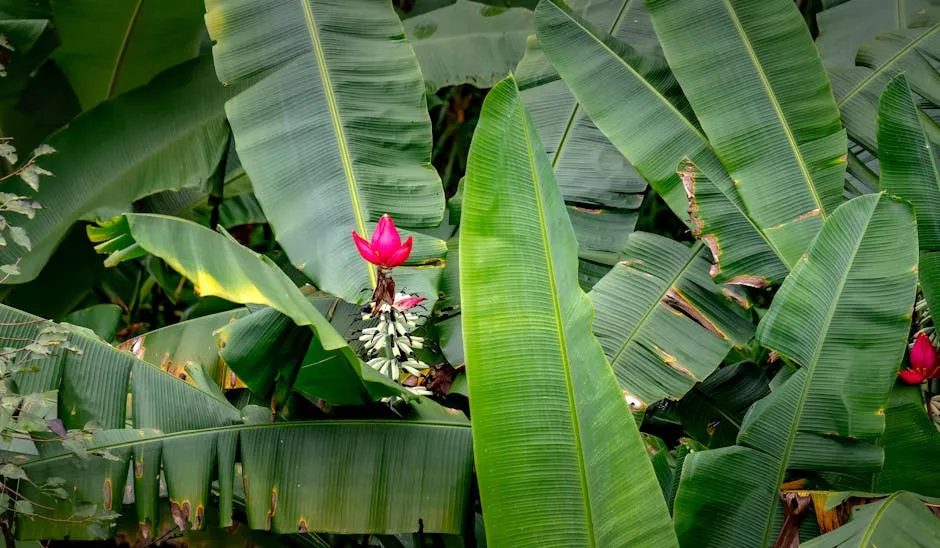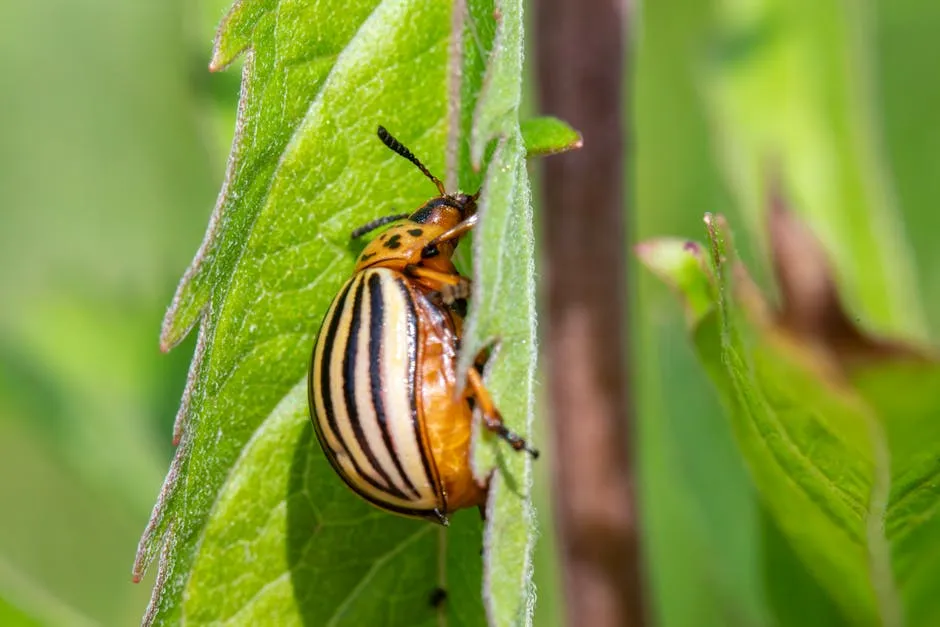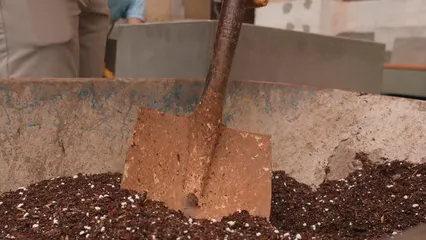

How to Overcome Common Challenges in Growing Exotic Fruits in Temperate Regions
Introduction
In a world where exotic fruits often seem a universe away, the dream of cultivating your own tropical paradise in temperate climates may feel like a fantasy. But what if we told you that with the right strategies, you could savor the sweet taste of mangoes, pineapples, and passion fruits right from your backyard? This article will explore the common challenges faced by adventurous gardeners and provide practical solutions to help you overcome them.
One of the biggest hurdles is climate. Temperate zones often lack the warmth and humidity that tropical fruits crave. But fear not! Creative gardening can bridge that gap. Microclimates, soil amendments, and careful plant selection can help you craft a cozy retreat for your exotic fruits.
Pest management is another sticky issue. Tropical fruits can attract pests that thrive in temperate environments. You’ll need to be vigilant and proactive in your pest control efforts. Organic options, like introducing beneficial insects, can keep your plants happy and healthy. For more on this, check out our article on Tips for attracting beneficial insects to your garden.
To get the most out of your garden, a Soil Testing Kit is essential. It helps you understand the nutrient levels and pH of your soil, setting the stage for a fruitful garden.

Using beneficial insects can significantly enhance your pest management strategy. Learn more about attracting beneficial insects here.
Dormancy is a sneaky challenge too. Many exotic fruits require specific chilling hours to thrive. Understanding these needs and selecting varieties that fit your climate is crucial. Cold-hardy options can flourish even when the weather tries to throw a tantrum!
Get ready to dig into the secrets of growing exotic fruits in less-than-ideal climates, where creativity and resilience can turn your garden into a vibrant oasis! With a sprinkle of patience, a dash of knowledge, and a whole lot of enthusiasm, you’ll be well on your way to enjoying the fruits of your labor—literally!
Overcoming Climate Challenges
Growing exotic fruits in temperate regions can feel like an uphill battle. But fear not! With a few clever strategies, you can navigate these challenges like a pro. Let’s tackle the nitty-gritty of climate challenges, focusing on chilling requirements and creating microclimates.
Chilling Requirements
Chilling requirements are crucial for fruit trees. These refer to the specific number of hours a tree needs to experience cold temperatures to break dormancy. Without sufficient chilling hours, trees may refuse to bloom, leaving you with a garden full of dreams but no fruit. Different species have varying needs, so knowing your plant’s requirements is essential.
To measure chilling requirements, you can use chilling units, which quantify the cold exposure hours. The most common method is the Utah model, which assigns points based on temperatures. For example, hours below 7.2°C earn varying points, with colder hours contributing more. This way, you can assess whether your local climate meets the needs of your chosen exotic fruit trees.
So, what’s a gardener to do if your area doesn’t provide enough chill? Consider planting varieties with lower chilling requirements. Breeding programs have developed cultivars that need fewer chilling hours, making them more suitable for warmer climates. Additionally, you can employ techniques like winter dormancy manipulation, such as applying chemical treatments that help induce bud break.
Understanding your specific climate conditions and the chilling needs of your plants can make a world of difference in your exotic fruit-growing adventure.
Creating Microclimates
Microclimates are your secret weapon. By creating localized environments that differ from the broader climate, you can boost your plants’ chances of thriving. Here are some techniques to consider:
- Use Walls and Fences: South-facing walls can trap heat and provide a cozy spot for plants. Consider planting fruits like figs or peaches against these surfaces for some extra warmth.
- Windbreaks: Erecting windbreaks using shrubs or trees can shield your plants from cold winds. This is particularly effective for delicate species that may struggle with exposure.
- Greenhouses: If you’re serious about your tropical fruit aspirations, investing in a greenhouse is a great option. A greenhouse can regulate temperature and humidity, creating a paradise for your exotic fruits.
- Elevation and Orientation: Don’t underestimate the power of elevation. Higher ground often experiences better drainage and airflow, reducing frost risk. Moreover, consider the orientation of your garden. South-facing slopes are typically warmer and sunnier, making them ideal for growing heat-loving plants.

By implementing these techniques, you can create a welcoming environment for your exotic fruits, allowing them to flourish despite the temperate climate.
Managing Pests and Diseases
Growing exotic fruits is not just about dealing with climate; pests and diseases are the unwelcome guests at this garden party.
Common Pests and Diseases in Temperate Regions
Exotic fruits can attract a variety of pests, from the notorious fruit fly to aphids. Each pest has its preferred targets, making it essential to stay vigilant. Fungal diseases, such as powdery mildew, can also wreak havoc. To make matters worse, climate change is exacerbating these issues. Warmer winters may extend pest lifecycles, leading to increased infestations.
Organic and Chemical Control Strategies
Organic methods can be your best friends in pest management. Companion planting is a fantastic strategy—certain plants repel pests or attract beneficial insects. For instance, planting marigolds can deter nematodes, while attracting ladybugs can help keep aphid populations in check. You can learn more about effective companion planting here.
When organic methods fall short, chemical pesticides may be necessary. However, always opt for targeted treatments and read labels carefully. The goal is to protect your plants while minimizing harm to beneficial insects. If you’re looking for a reliable solution, consider a pesticide sprayer to efficiently apply your treatments.

Companion planting can enhance your garden’s health and productivity. Discover more companion planting strategies here.
Balancing the use of organic and chemical strategies can keep your garden flourishing and healthy, ensuring that your exotic fruit dreams don’t turn into a pest-filled nightmare.
Cultivation Techniques
Growing exotic fruits in temperate regions can feel like a rollercoaster ride. Buckle up! With the right cultivation techniques, you can navigate the twists and turns of this adventurous journey. Let’s break it down into manageable sections.
Soil Preparation and Fertilization
Healthy soil is the foundation of any thriving garden, especially for exotic fruits. Think of soil as the cozy blanket that keeps your plants warm and comfortable. So, how do you ensure your soil is up to the task?
Start with soil testing. This simple step reveals the nutrient levels and pH of your soil. You can purchase a Soil Testing Kit or send a sample to a local lab. Once you have the results, you can amend your soil accordingly. Many exotic fruits prefer slightly acidic soil, with a pH between 5.5 and 7.0. If your soil is too alkaline, consider adding elemental sulfur or compost to lower the pH.

Next, let’s talk about organic matter. This is like a buffet for your plants! Incorporating compost or well-rotted manure enriches the soil, improving its structure and water retention. Plus, it introduces beneficial microbes that help your plants thrive. Aim for a minimum of 25% organic matter in your soil mix.
Don’t forget about nutrients! Exotic fruits are often heavy feeders. A balanced fertilizer rich in nitrogen, phosphorus, and potassium will boost your plants’ growth. For a more natural option, consider using organic fertilizer (fish emulsion) or seaweed extract. These organic fertilizers not only feed your plants but also improve soil health over time.
In summary, testing your soil, adding organic matter, and choosing the right fertilizers are essential steps. With these tips, your soil will be ready to support your exotic fruit dreams!
Watering and Irrigation Practices
Watering is crucial when growing exotic fruits, as these plants often hail from tropical climates where humidity is high. But don’t drown them! Overwatering can lead to root rot and other problems. So, how do you strike the perfect balance?
First, understand the watering needs of your chosen fruits. For example, mangoes and pineapples enjoy moist soil but can’t stand soggy feet. Research the specific requirements of each fruit variety to tailor your approach.
Consider adopting drip irrigation or soaker hoses for efficient water use. These methods deliver water directly to the roots, minimizing waste and preventing fungal diseases. Plus, they save you time—set it and forget it!

Rainwater harvesting is another fantastic strategy. Collecting rainwater not only conserves resources but also provides your plants with clean, chemical-free water. Install rain barrels to catch runoff from your roof, and use this precious resource for your garden.
Lastly, keep an eye on the weather. During hot spells, your plants may require more frequent watering. Conversely, during cooler months, reduce the frequency. A simple moisture meter can help you monitor soil conditions, ensuring your plants get just the right amount.
By mastering watering and irrigation practices, you’ll keep your exotic fruits happy and hydrated, ready to flourish in your temperate paradise.

Harvesting and Post-Harvest Care
Growing exotic fruits is just the beginning. The real magic happens when it’s time to harvest and care for your bountiful produce. Let’s dive into recognizing ripeness and preserving your fruits for maximum enjoyment.
Recognizing Ripeness
Knowing when to harvest is key. Each fruit has its own unique signs of ripeness. For instance, mangoes should be plump and slightly soft to the touch, while pineapples develop a sweet aroma at their peak.
A good rule of thumb is to observe color changes. Many fruits, like avocados, change from green to a richer hue when they’re ready to pick. Use your senses—smell, touch, and sight—to determine the perfect time for harvest.
When harvesting, take care. Use clean, sharp planting shears to cut the fruit gently from the plant. Avoid tugging or twisting, as this can damage the plant and reduce future yields.

Storage and Preservation Techniques
Once you’ve gathered your exotic fruits, it’s time to think about storage. Proper care ensures that your hard work pays off in delicious, fresh fruit long after harvest.
Different fruits require different storage methods. For example, avocados can ripen on the counter but should be refrigerated once they reach your desired softness. On the other hand, fruits like citrus can last for weeks in the fridge. To learn more about growing citrus trees, check out our guide on how to grow citrus trees in containers.
Storing fruits properly can extend their shelf life significantly. Learn more about growing citrus trees here.
To maximize shelf life, consider using preservation techniques. Canning supplies, freezing, or making jams can help you enjoy your harvest all year round. Just be sure to follow safe practices to avoid spoilage.
Lastly, always check your stored fruits for signs of spoilage. Remove any damaged or overripened fruits to prevent them from affecting the others.
With these harvesting and post-harvest care tips, you can savor the fruits of your labor, turning your garden into a tropical wonderland right in your backyard!
FAQs
What are some cold-hardy exotic fruits that I can grow in temperate climates?
If you’re yearning for a taste of the tropics but live in a cooler climate, don’t fret! There are plenty of cold-hardy options. Hardy kiwi is a fantastic choice. These little gems are sweet and tangy, perfect for snacking. Figs are another winner; they adapt well and reward you with luscious fruit. Citrus varieties like calamondin or certain sour oranges can also thrive in sheltered spots. Experiment with these fruits, and you might just find your new favorites!
How can I protect my exotic fruits from frost?
Frost can be a sneaky adversary. To shield your precious fruits, consider using frost cloths or blankets. These handy tools trap warmth close to the plants. Planting in sheltered areas, like near walls or hedges, helps too. You can also get creative with heat sources! Simple measures like placing rocks that absorb heat during the day can provide warmth at night.
What are the best practices for watering exotic fruit plants?
Watering is crucial for exotic fruits. The frequency depends on the species and climate. A general rule? Keep the soil consistently moist but not soggy. Drip irrigation systems are fantastic for delivering water right to the roots. Always check for signs of overwatering, like yellowing leaves. A moisture meter can be a gardener’s best friend!
Are there any specific fertilization needs for exotic fruits?
Fertilizing exotic fruits isn’t just a matter of throwing some granules on the ground and hoping for the best. Oh no! It requires a bit more finesse and understanding. Balanced fertilization plays a crucial role in the growth and fruiting of these unique plants. Think of it as giving your plants a well-rounded diet; you wouldn’t serve them just dessert, would you? Exotic fruits often require specific nutrients to thrive. Nitrogen, phosphorus, and potassium are the holy trinity of plant nutrition, but let’s not forget about the micronutrients! Elements like calcium, magnesium, and iron can make a significant difference in plant health. For instance, calcium is essential for cell wall structure, while magnesium is crucial for photosynthesis. Without these nutrients, your tropical dreams could turn into a garden of despair. So, how do you ensure your exotic fruits get the right nutrients? Start with soil testing. This simple step can reveal nutrient deficiencies, allowing you to tailor your fertilization strategy. You might need to amend your soil with compost or well-rotted manure, which not only provides nutrients but also improves soil structure. It’s also important to consider the timing of your fertilization. Exotic fruits often benefit from a slow-release fertilizer during their growing season. This ensures a steady supply of nutrients, promoting healthy growth and fruit development. Remember, a little goes a long way! Over-fertilizing can lead to nutrient burn, which is about as pleasant for your plants as a sunburn is for you. Lastly, keep an eye on your plants. If they show signs of nutrient deficiencies—like yellowing leaves or stunted growth—it might be time to adjust your fertilization plan. By paying attention to your exotic fruits’ needs and providing balanced nutrition, you’ll be well on your way to a thriving garden filled with delicious, tropical treats!
How can I deal with pests organically in my exotic fruit garden?
Welcome to the wild world of pest control! Growing exotic fruits can attract a variety of pests, and dealing with them organically is like hosting a party where only the good guests are allowed in. First things first, maintaining ecosystem balance is crucial. The goal is to encourage beneficial insects that can fend off the bad guys. One of the simplest methods is companion planting. This involves growing certain plants together that can naturally repel pests. For example, marigolds are like the bouncers of your garden, keeping nematodes at bay while attracting ladybugs that munch on aphids. Talk about a win-win! Another organic pest control method is introducing beneficial insects. Ladybugs, lacewings, and predatory wasps are like superhero sidekicks for your garden. They swoop in and take care of pests before you even know there’s a problem. You can even purchase these little warriors from garden centers. Just imagine a squad of ladybugs on a mission to save your mangoes! Regular monitoring and sanitation are also key. Keep your garden tidy. Remove fallen fruits and any decaying plant material that could attract pests. It’s like cleaning up after a party—nobody wants the ants to crash! If pests do invade, consider using organic sprays made from neem oil or insecticidal soap. These are gentle but effective. Just remember to apply them early in the morning or late in the evening to avoid harming beneficial insects. In summary, dealing with pests organically is all about balance, vigilance, and a little creativity. By fostering a healthy ecosystem and using natural methods, you can keep your exotic fruit garden thriving and pest-free. So, arm yourself with knowledge and get ready to battle those garden invaders—your plants will thank you with a bountiful harvest!
Please let us know what you think about our content by leaving a comment down below!
Thank you for reading till here 🙂
All images from Pexels



